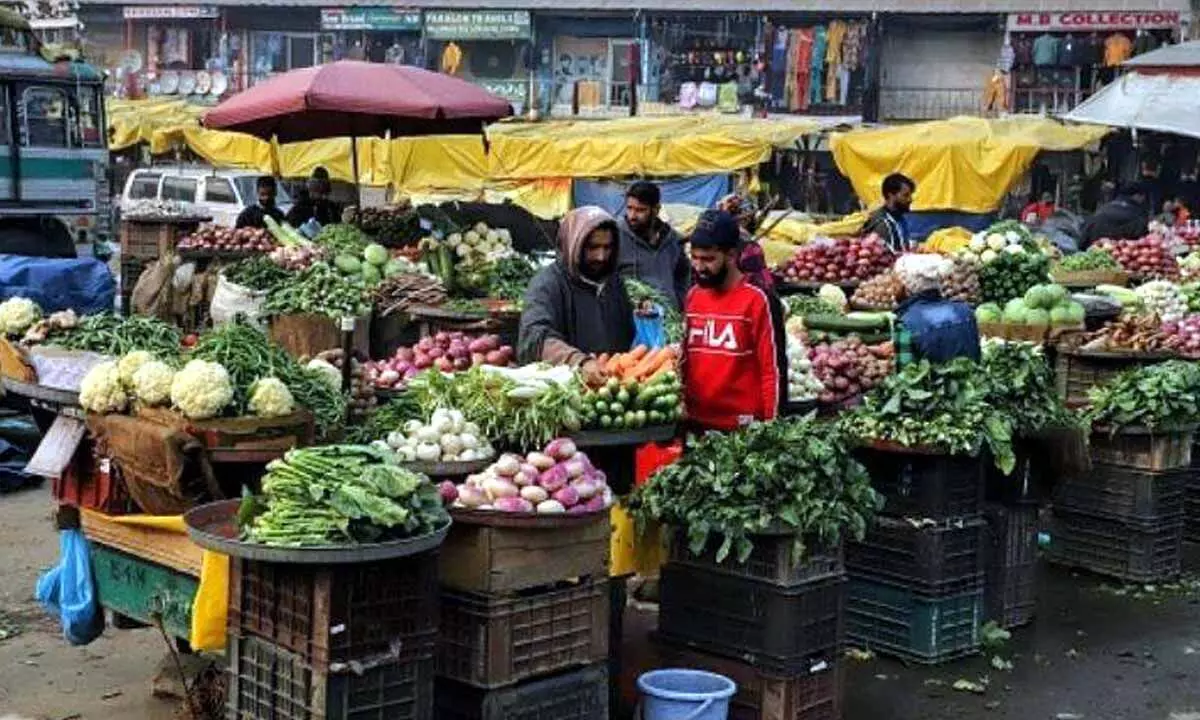Inflation hits high amid sluggish IIP

Inflation hits high amid sluggish IIP
- IIP grew at 1.3% in Jan
- It rose 0.4% in Dec 2021, a 10-mth low
- In April 2021-Feb 2022 period, IIP grew at 12.5% on a very low base of -11.1% in previous corresponding period
- Retail inflation rising mainly due to consumer food price index (CFPI) rose to 7.68% from 5.85%
New Delhi: Key macroeconomic indicators of factory output and inflation have painted a grim picture of the economy, with the index of industrial production (IIP) rising just by 1.7 per cent in February and inflation touching almost seven per cent.
The quick estimates of IIP, comprising mining, manufacturing and electricity, show that growth in February was unimpressive even with the low base of -3.2 per cent in February 2021. Looking at the positive side, 1.7 per cent in February shows a rising trend; the IIP grew at 1.3 per cent in January and 0.4 per cent in December 2021, which was a 10-month low.
In the April 2021-February 2022 period, however, the IIP grew at 12.5 per cent. But, again, this was on a very low base, of -11.1 per cent in the corresponding period previous fiscal.
It looks like whatever gains the IIP made in the current fiscal were because of the very low base in 2020-21, the year worst hit by the Covid pandemic, even though there is a slightly rising trend.
As always, the IIP reflected the trend in manufacturing, which has about 78 per cent weight in the index. Manufacturing registered a rise of 0.8 per cent February, against a decline of 3.4 per cent in February last year. In the first 11 months of 2021-22, there was growth of 12.9 per cent, against a decline in the same period last fiscal.
The use-based classification of the IIP shows a disturbing trend: capital goods have been weak for quite some time, and remain so. This segment is indicative of capacities being added to the economy, of more investment. In February, the segment was almost flat, rising just by 1.1 per cent, against -4.2 per cent in the month last year.
Even more worrisome is capital goods' growth rate for the first 11 months of the current fiscal, 18.8 per cent, against a decline of 23.5 per cent in the same period in 2020-21. Which means that there is a decline in the segment even vis-à-vis with pre-Covid fiscal. Equally depressing are the consumer price index (CPI) numbers. In February, it rose by 6.07 per cent, crossing the Reserve Bank of India's toleration band of 4-6 per cent. This put a lot of pressure on RBI Governor Shaktikanta Das somehow managed to raise key bank rates; he somehow managed to keep the same rates.
But with the CPI rising to 6.95 per cent in March, it will be difficult for the central bank to maintain the status quo.
The CPI is up mainly because the consumer food price index (CFPI) continues to show an upward trend. The CFPI went up from 5.85 per cent in February to 7.68 per cent in March.
It needs to be mentioned here that food inflation hits the poor most, for food is a big proportion of their total expenditure and income—much bigger than that of the middle class. It is also quite well-established that the pandemic and the lockdowns it occasioned hurt the poor most. A report by Azim Premji University in May last year showed that around 23 crore people were pushed into poverty. The rural poverty rate increased by 15 percentage points, where in cities it was about 20 points.
It is true that the International Monetary Fund recently said nice things about the Indian government. Its working paper said that "the social safety net provided by the expansion of India's food subsidy program absorbed a major part of the pandemic shock. The program provided insurance to the poor and prevented an increase in the prevalence of extreme poverty in India."
That may be true, but the government can't sit on its laurels; it has to think of decreasing extreme poverty. It has extended the scheme of free food grains, taken during the pandemic, for six months. This will surely help the poor.
But two points need to be made here. First, the fiscal situation is not very good, so it would not be possible for the government to provide free food grains for a very long period. Second, the poor, as others, need more than food grains.
Therefore, rise in food prices will always be a concern. As also is sluggish recovery in industrial growth. A dilemma comes along with the concern: growth or inflation? The dilemma will haunt both the government and the RBI for some time.

















